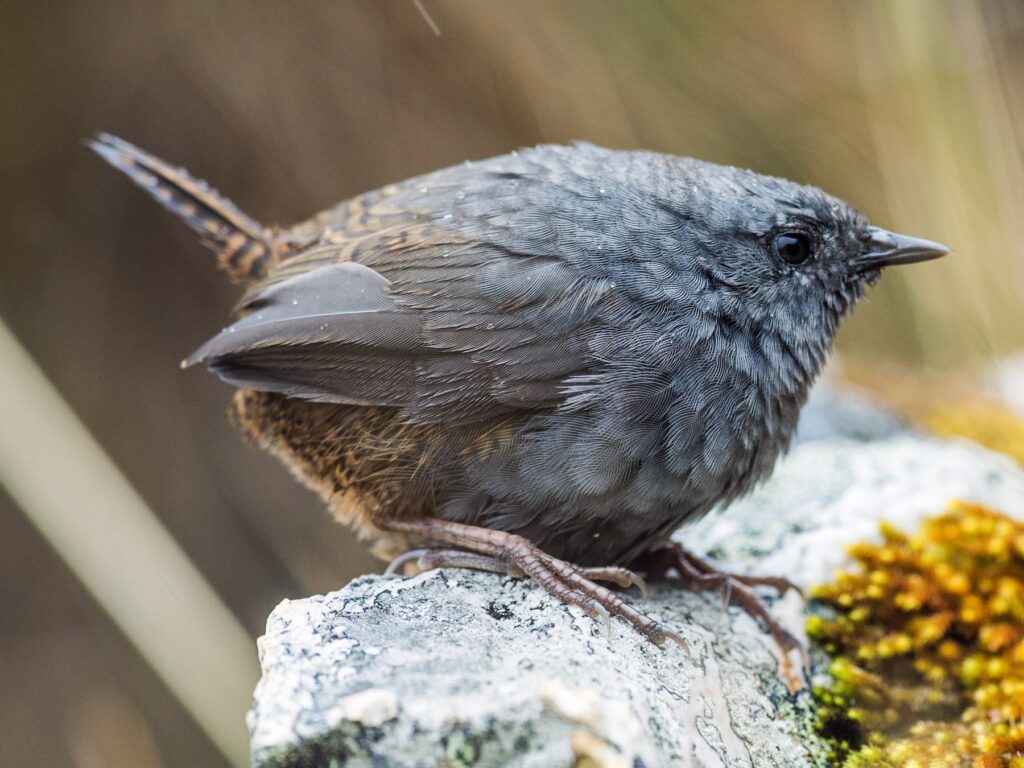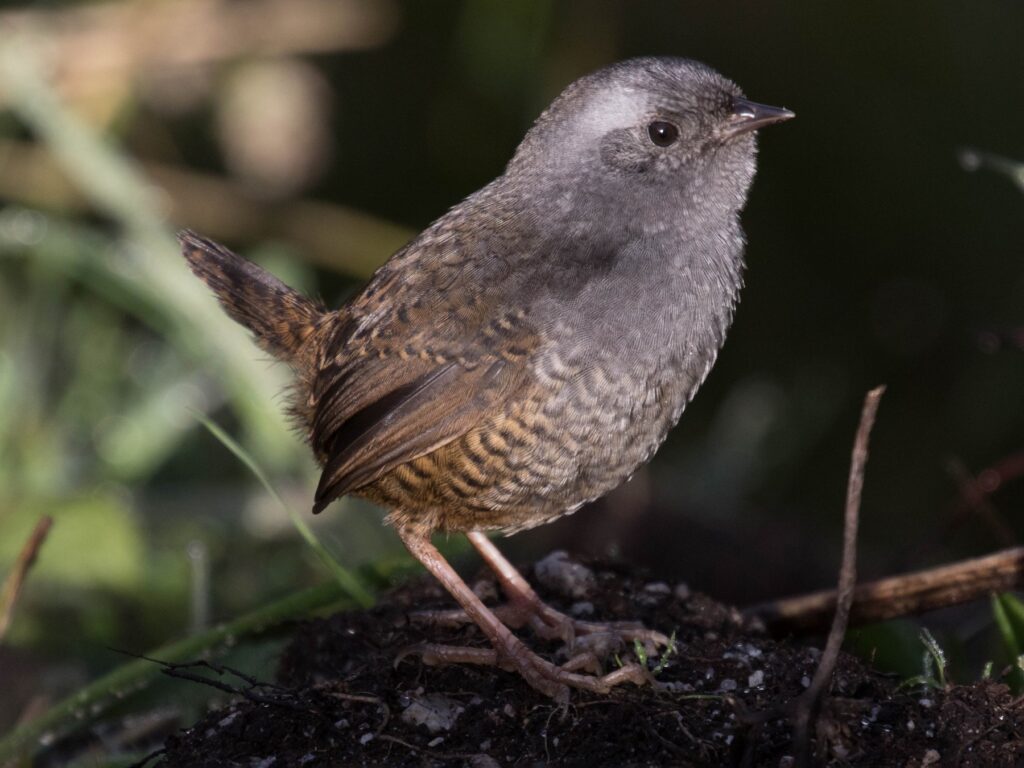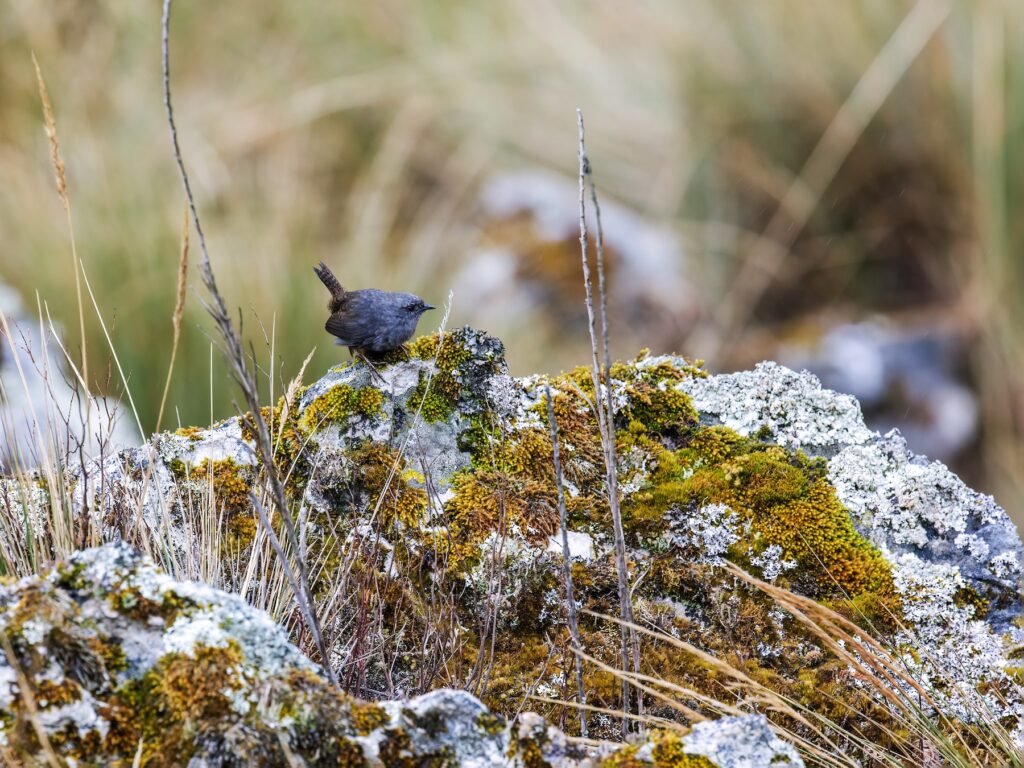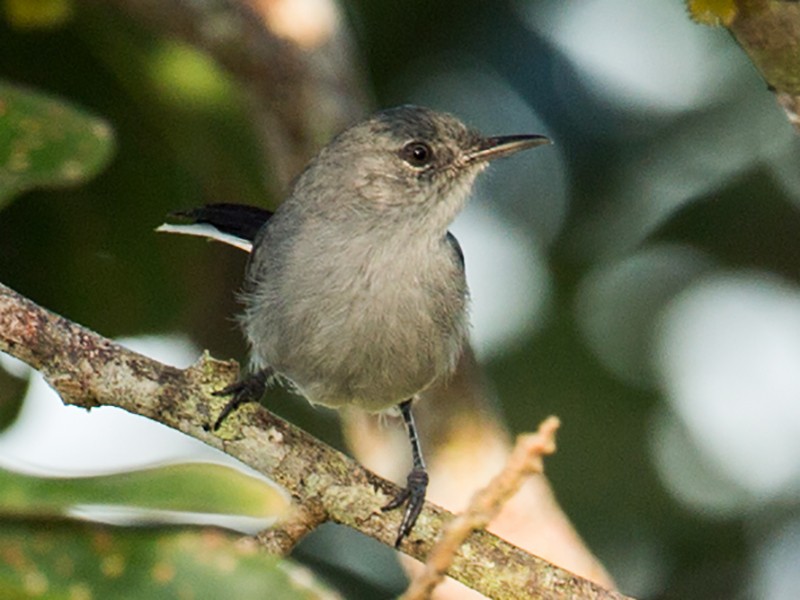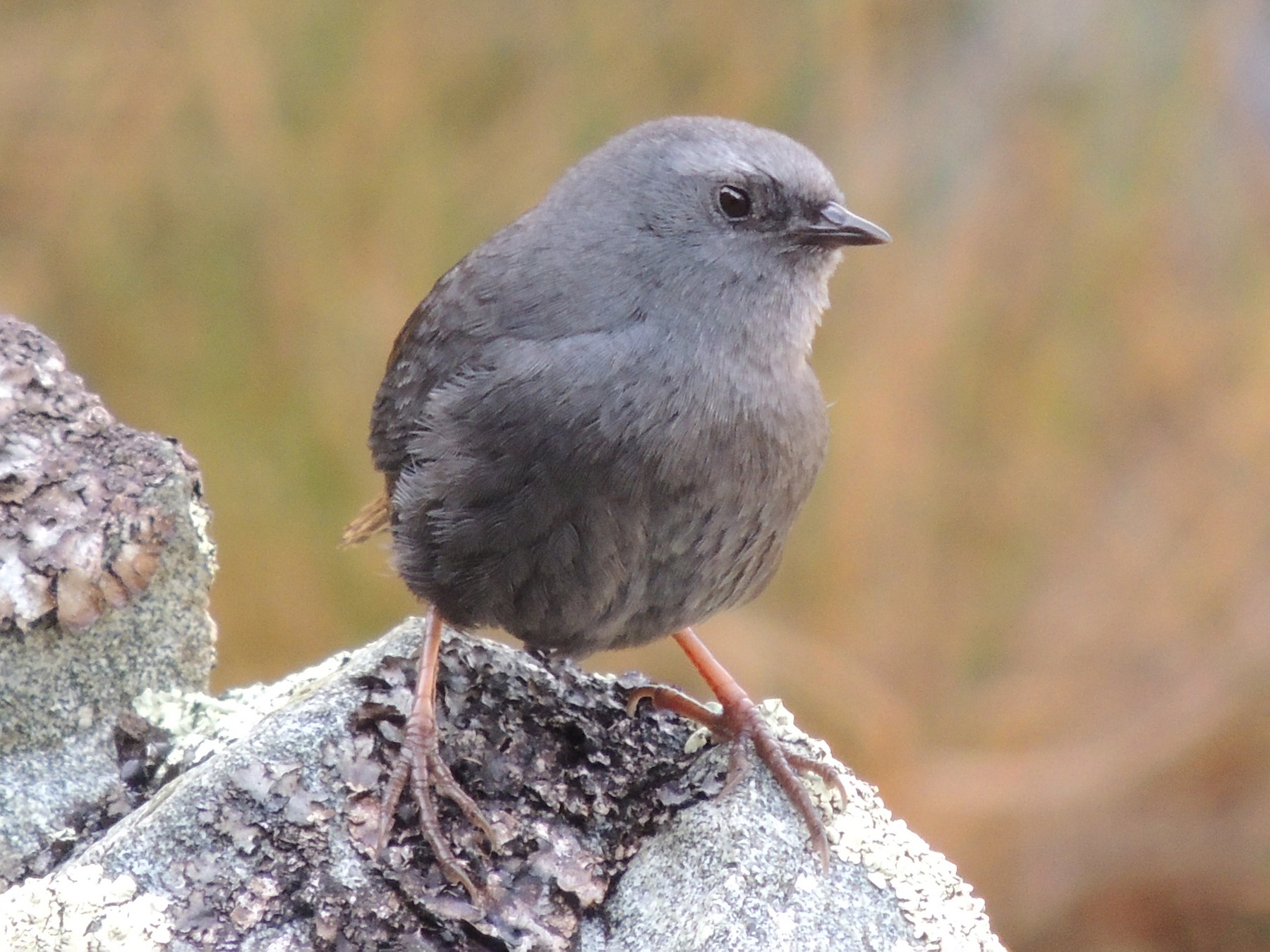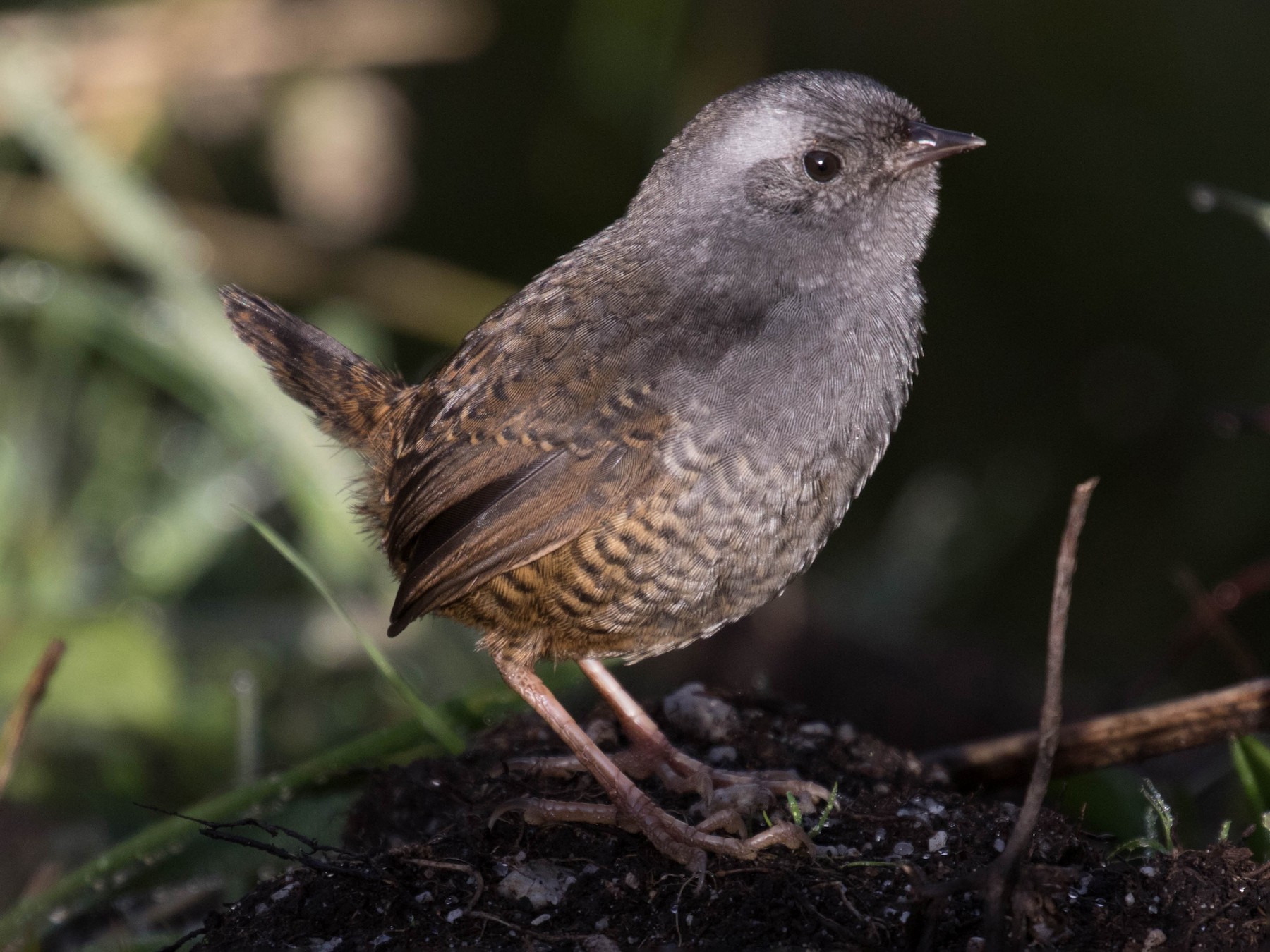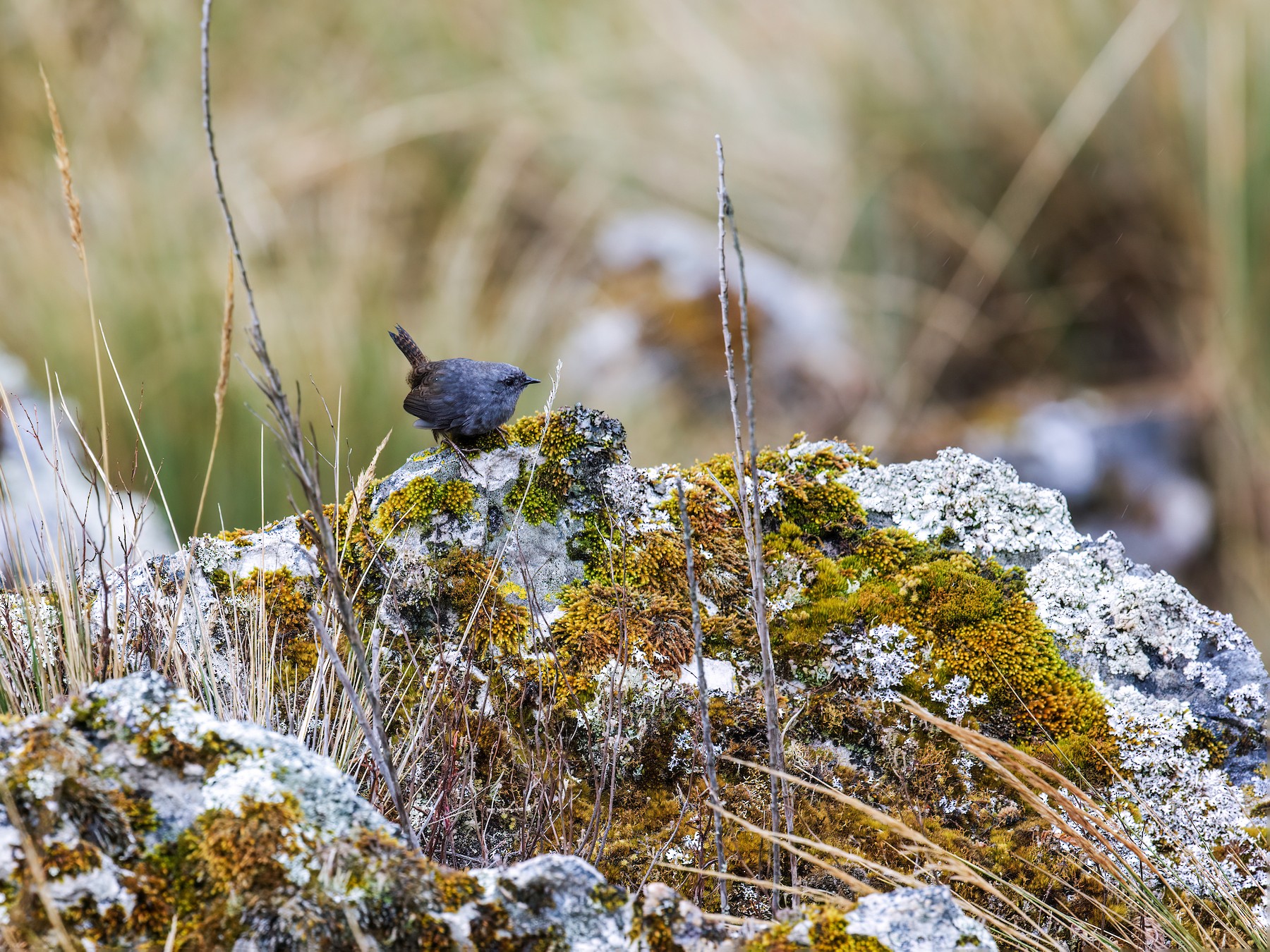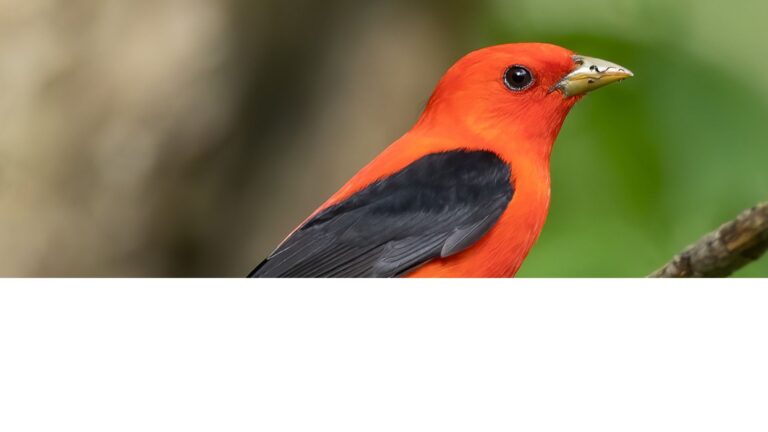Jalca Tapaculo: The Rare & Enigmatic Bird of the Andes
The Jalca Tapaculo is a fascinating bird species native to the Andes Mountains.
This rare bird, known scientifically as Scytalopus frankeae, thrives in the high-altitude habitats of Peru, where it finds its unique niche among the diverse birdlife.
Little is known about its behavior, which makes it a compelling subject for birdwatchers and researchers.
Located primarily in the jalca grasslands, this tapaculo’s appearance and calls are distinct.
People often confuse it with similar species, but it has unique features that set it apart.
As an understory dweller, the Jalca Tapaculo plays a role in its ecosystem, adding to the richness of avian diversity in this specific region and South America.
Key Takeaways
- The Jalca Tapaculo is a unique bird found in the high-altitude regions of Peru.
- Its distinct characteristics help differentiate it from similar bird species.
- Conservation efforts are vital for ensuring the survival of this rare bird species.
Taxonomy and Classification
The Jalca Tapaculo sits within a fascinating classification inside the bird family Rhinocryptidae.
This section gets into its family, genus, and species, highlighting why it matters in avian taxonomy.
Family Rhinocryptidae
The Jalca Tapaculo belongs to the Rhinocryptidae family, commonly called tapaculos.
This family includes small, secretive birds mainly found in South America, and they’re known for their robust bodies and short tails.
Most tapaculos spend their time on the ground, hiding in dense vegetation.
The Rhinocryptidae family stands out for its high level of endemism, especially in the Andes, where wild habitats spark unique evolutionary paths.
Researchers keep refining the family’s taxonomy, which, honestly, is pretty important for conservation.
Genus Scytalopus
Within Rhinocryptidae, the Jalca Tapaculo falls under the genus Scytalopus.
This genus has a complicated mix of species, with birds that look strikingly similar in size and appearance.
Scytalopus species vary across different habitats, making them fascinating for biogeographical studies.
Taxonomists use advanced techniques like molecular analysis to figure out relationships among these birds.
Recent revisions have led to the identification of several new species, keeping researchers on their toes.
The American Ornithological Society recognizes these classifications, which is a big deal for understanding South American bird diversity.
Species Scytalopus frankeae
The species in the spotlight, Scytalopus frankeae, was described recently as part of the ongoing revision of the Scytalopus group.
Its name honors conservation work in the Jalca region.
You can pick out this species by its unique vocalizations and its particular taste for high-elevation habitats.
Researchers have found that Scytalopus frankeae shows clear differences from its close relatives, which confirms its status as a new species.
Ornithologists keep adding to the Clements taxonomy with their findings, and the South American Classification Committee helps formalize these distinctions.
Distribution and Habitat
The Jalca Tapaculo lives in Peru and has pretty specific habitat preferences that shape where it’s found.
Its populations are scattered, mostly in different regions of the Andes.
Knowing where this bird thrives helps with conservation and, honestly, just makes you appreciate its role in the ecosystem a bit more.
Geographic Range in Peru
The Jalca Tapaculo’s range centers on the central Andes of Peru, in places like Junín, Huánuco, and Pasco.
It usually shows up in montane areas between 3,200 and 4,500 meters in elevation.
These populations are pretty isolated, which means each group adapts in its own way.
This isolation gives researchers a chance to study biodiversity and fine-tune conservation plans for each region.
Preferred Forest Types
Jalca Tapaculos stick to certain forest types: upper montane forests and wet shrub forests are their favorites.
They hide out in dense vegetation, mostly in the understory, where food is plentiful and cover is easy to find.
They’re especially into elfin forest habitats, with all those shrubs and little trees.
Their preferred habitat shapes their foraging style—they hunt for insects and invertebrates in the thick forest litter.
Comparison to Tschudi’s Tapaculo
Tschudi’s Tapaculo, a relative, hangs out at lower elevations and in different forest types.
Though both belong to Rhinocryptidae, they’ve each adapted to their own environments.
Tschudi’s Tapaculo prefers transitional forests, while the Jalca Tapaculo sticks with high-altitude spots.
This difference really shows how each species carves out its own niche, making habitat conservation even more important for both.
Physical Description and Identification
The Jalca Tapaculo stands out in the high Andes, with some pretty distinctive physical traits.
People usually identify it by specific features, which birdwatchers and researchers pay close attention to.
Visual documentation is a big help here.
Distinguishing Features
The Jalca Tapaculo has a robust body and measures about 16 to 18 centimeters long.
Its plumage is mostly brownish, with subtle streaks that let it blend right into its surroundings.
One thing that pops is its long tail, which it often holds upright—kind of a signature move.
The bird’s beak is short and stout, perfect for digging through dense vegetation.
Strong legs help it move easily through the rough, mountainous terrain.
And then there’s the call—distinctive notes that echo through its home range.
Images and Visual Documentation
High-quality photos and videos make identifying the Jalca Tapaculo so much easier.
Photographers and birders love capturing its unique features, and stock photos are pretty useful for both personal and educational use.
Videos that show the bird in its element offer a glimpse into its behavior and interactions.
Online, you’ll find plenty of vectors and illustrations that show off different angles of this species.
Having access to these visuals really helps researchers and fans get a better sense of what makes this bird special.
Ecology and Behavior
The Jalca Tapaculo is a quirky bird, well-adapted to its specific environment.
It thrives in unique habitats and shows some interesting behaviors when it comes to feeding and breeding.
Habitat Preferences
Jalca Tapaculos stick to dense spots in the montane forest ecosystem.
You’ll usually find them in the understory, where thick plants offer cover and plenty of food.
They like wet shrub forests and upper montane forests—places with lots of moisture and plant life.
These habitats give them shelter from predators and a buffet of insects.
The thick foliage lets them forage without being seen.
Generally, they stick to elevations between 2,500 and 3,500 meters, where conditions suit them best.
Diet and Feeding Habits
Jalca Tapaculos mostly eat insects and small invertebrates.
They forage on the ground, poking through leaf litter and plant roots.
Ants, beetles, caterpillars—you name it, they’ll eat it if it’s small and wriggly.
They scratch and probe as they search for food, which helps them find hidden snacks.
Usually, they forage alone, relying on sharp hearing to spot prey.
This approach works well in their dense, tangled habitat.
Breeding and Reproduction
The Jalca Tapaculo breeds during the rainy months, when food is abundant.
They build hidden nests deep in vegetation to protect their chicks.
The female lays two or three eggs and incubates them for around two weeks.
Both parents pitch in to care for the chicks after they hatch.
They feed their young a steady diet of small insects, which helps the chicks grow strong in a tough environment.
Conservation Status and Research
The Jalca Tapaculo’s conservation status and the research around it are key to its future.
This bird only lives in Peru, and its survival depends on careful monitoring and support from bird organizations.
Current Conservation Assessments
Global conservation groups haven’t looked closely at the Jalca Tapaculo yet.
Local surveys show it has a small range, mostly sticking to Peruvian montane forests and grasslands.
Habitat loss from farming and deforestation puts it at risk.
Researchers say we need more field studies to really understand its population trends.
Now that it’s recognized as a new Scytalopus species, interest in its conservation has grown.
Protecting its habitat feels urgent.
Role of Ornithological Organizations
Ornithological groups have stepped up to help conserve the Jalca Tapaculo.
The American Ornithological Society backs projects to study and protect South American birds, working with local experts to gather data.
The South American Classification Committee’s decision to list the Jalca Tapaculo as a separate species has helped raise awareness.
The International Ornithological Congress recently discussed bird conservation strategies, and these groups working together pushes efforts to protect the bird’s home.
Recent Discoveries and Ongoing Studies
Recent research has shed light on the Jalca Tapaculo’s behavior and ecology.
Scientists have documented its unique calls and feeding habits, which helped confirm it as its own species.
Ongoing studies keep stressing how important habitat preservation is.
Projects funded by groups like Flash30 focus on restoring habitats and tracking biodiversity.
These efforts are crucial for understanding how environmental changes affect the species.
With more research, conservationists can develop better strategies to help the Jalca Tapaculo and its ecosystem.
Relatives and Similar Species
The Jalca Tapaculo shares its home and some traits with a handful of other Scytalopus species.
Its closest relatives include the Paramo Tapaculo and Tschudi’s Tapaculo, and comparing them really highlights the diversity in this bird group.
Paramo Tapaculo
The Paramo Tapaculo, or Scytalopus opacus, lives in the high-altitude paramo regions of Ecuador and Colombia.
This species prefers wet, grassy areas and looks pretty similar in size and shape to the Jalca Tapaculo.
Its plumage is darker, which helps set it apart.
The Paramo Tapaculo’s call is more abrupt, while the Jalca Tapaculo’s notes sound softer.
Both birds play a big part in their ecosystems by keeping insect populations in check.
Comparison within Scytalopus
The genus Scytalopus includes a bunch of species—some strikingly similar, others not so much. Tschudi’s Tapaculo (Scytalopus tschudii) is a close cousin living up in the high Andes, mostly in Peru.
Like the Jalca Tapaculo, Tschudi’s sticks to high altitudes. But you’ll find it in slightly different places, like thick undergrowth and those misty montane forests.
Both Tschudi’s and Jalca Tapaculos wear pretty cryptic plumage, perfect for blending in. Ornithologists usually tell them apart by subtle differences in their songs and where they like to hang out.
If you want to dig deeper into Scytalopus diversity, check out this study. It’s got way more detail than I could squeeze in here.
Frequently Asked Questions
Got questions about Tapaculos? You’re not alone. Here’s a quick dive into what people usually wonder about—traits, habits, habitats, calls, diet, and where these elusive birds actually live.
What are the distinguishing characteristics of the Tapaculo species found in the Utcubamba region?
In Utcubamba, Tapaculo species stand out with their unique plumage and compact bodies. They tend to have short wings, long tails, and some show off distinct color patterns that make them easier to spot—if you can spot them at all.
How does the behavior of the Vilcabamba Tapaculo differ from other Tapaculo species?
The Vilcabamba Tapaculo acts pretty shy and prefers hiding in dense vegetation. Unlike some of its relatives, it doesn’t really care to check out humans and usually stays tucked away.
What is the habitat range for the Neblina Tapaculo, and how does it impact its conservation status?
The Neblina Tapaculo lives mostly in humid montane forests between 1,500 and 2,500 meters. Since it relies so much on that specific habitat, it’s at risk when those forests disappear—makes conservation tricky, honestly.
What are the vocalization patterns of the Ampay Tapaculo compared to the Trilling Tapaculo?
The Ampay Tapaculo sings with a melodious, varied call that carries through thick forest. Meanwhile, the Trilling Tapaculo keeps things simple with a more rhythmic, repetitive song—kind of a giveaway if you’re listening for it.
How does the Nariño Tapaculo’s diet adapt to the changing seasons?
The Nariño Tapaculo switches things up by eating whatever’s around—bugs, seeds, fruit, you name it. This flexibility helps it get by no matter what the season throws at it.
What are the key factors affecting the population distribution of the Unicolored Tapaculo in its natural habitat?
Habitat availability shapes where the Unicolored Tapaculo lives. Food sources play a big role too.
Climate conditions can really shake things up for them. If any of these factors change, you’ll probably see their numbers and locations shift around.

